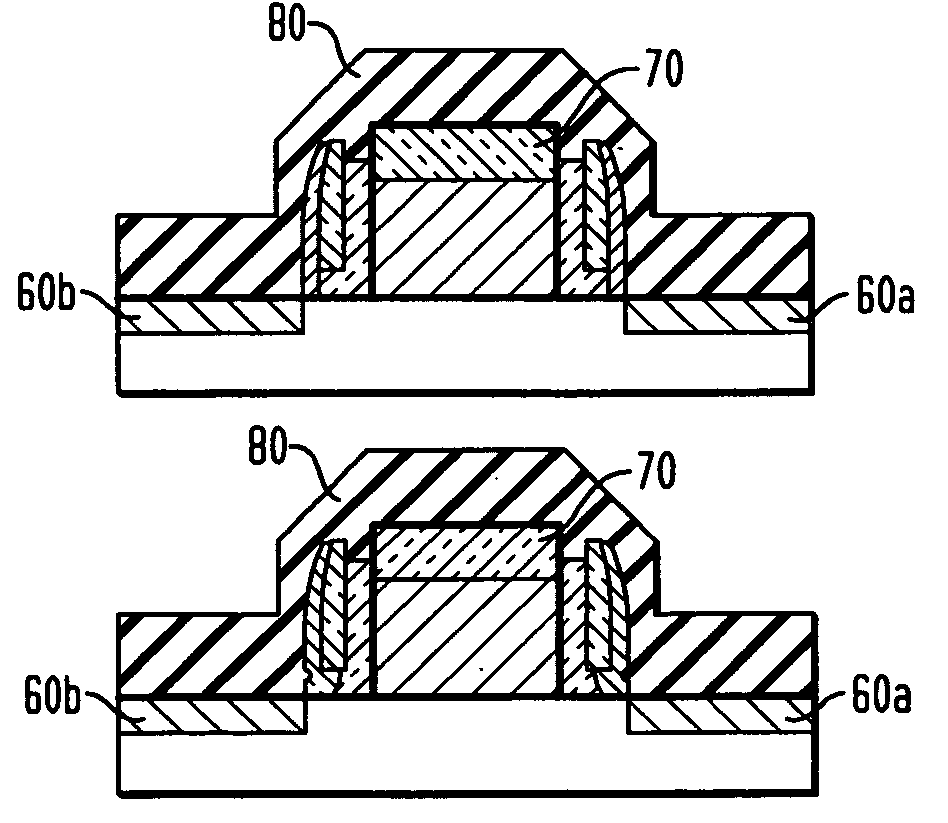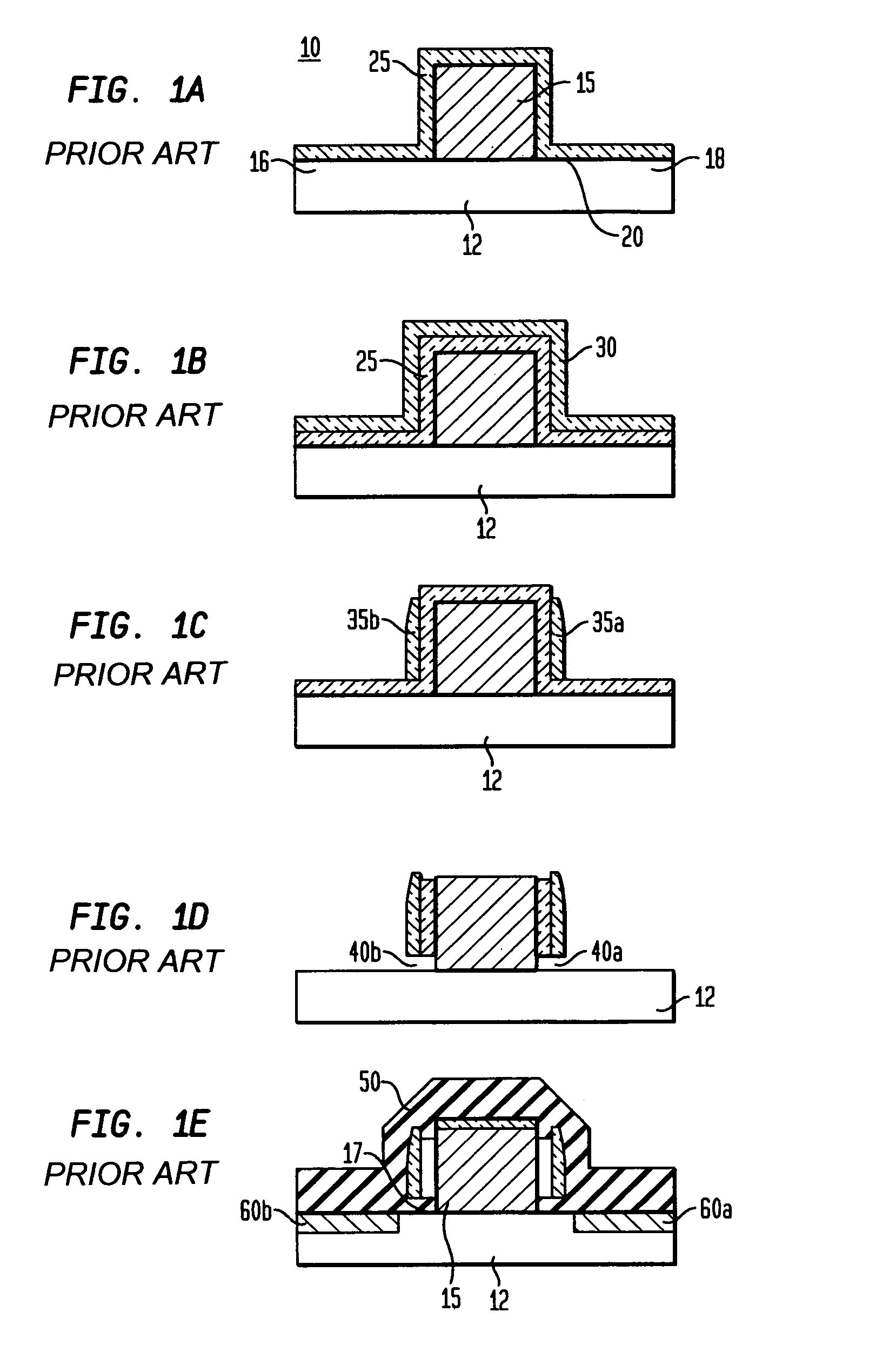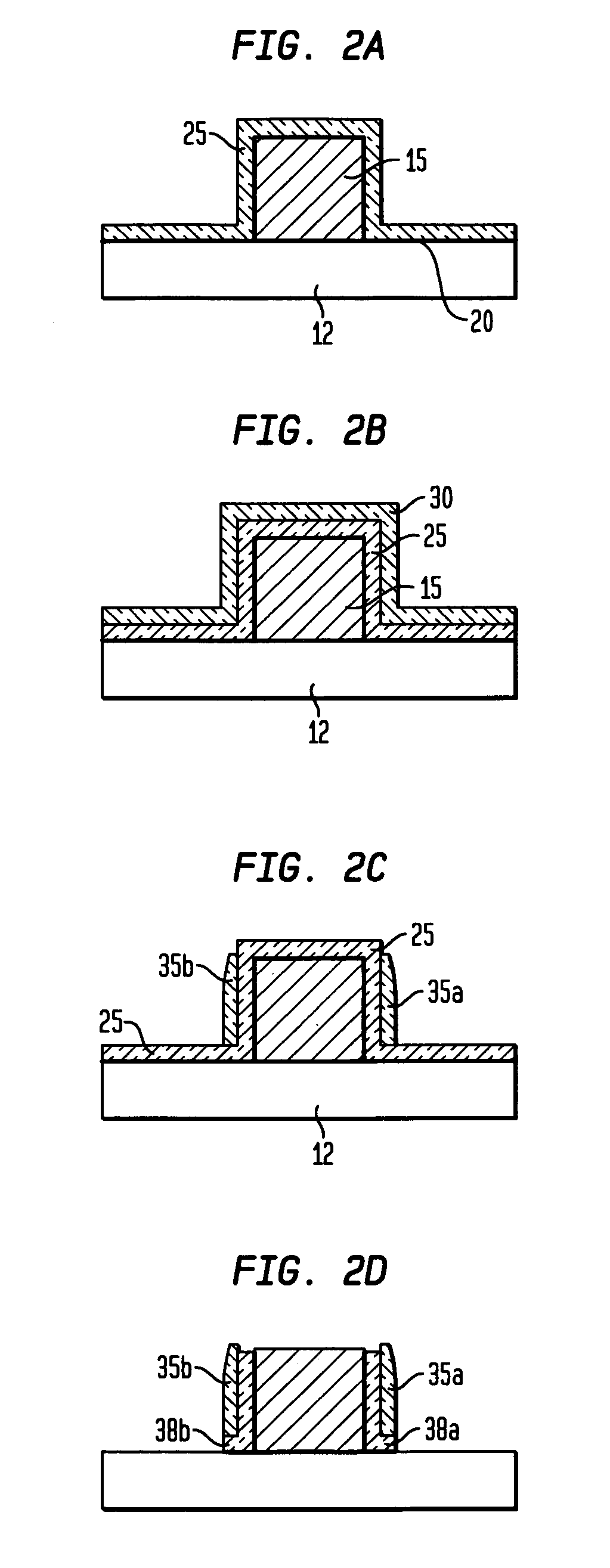Method for avoiding oxide undercut during pre-silicide clean for thin spacer FETs
a thin spacer and pre-silicide cleaning technology, applied in semiconductor devices, semiconductor/solid-state device details, electrical apparatus, etc., can solve the problems of dielectric etch stop under the spacer b>25/b> becoming severely undercut at regions
- Summary
- Abstract
- Description
- Claims
- Application Information
AI Technical Summary
Benefits of technology
Problems solved by technology
Method used
Image
Examples
Embodiment Construction
[0022]FIGS. 2(a)–2(h) depict the methodology for avoiding oxide undercut when performing a pre-silicide clean step to remove residual material from the silicon surfaces (either source / drain or gate regions). This methodology enables the formation of transistors with thin spacer geometries for improving FET series resistance.
[0023]The various processing steps and materials used in fabricating the CMOS device of the present invention, together with various embodiments thereof, will now be described in greater detail by the discussion that follows.
[0024]FIG. 2(a) illustrates an initial structure that is employed in the present invention. Specifically, the initial structure shown in FIG. 2(a) comprises a semiconductor substrate 12 having a patterned gate stack 15 formed on portions of the semiconductor substrate. In accordance with the present invention, each patterned gate stack includes a gate dielectric 20, gate conductor 15 formed atop the gate dielectric, and an additional dielectr...
PUM
 Login to View More
Login to View More Abstract
Description
Claims
Application Information
 Login to View More
Login to View More - R&D
- Intellectual Property
- Life Sciences
- Materials
- Tech Scout
- Unparalleled Data Quality
- Higher Quality Content
- 60% Fewer Hallucinations
Browse by: Latest US Patents, China's latest patents, Technical Efficacy Thesaurus, Application Domain, Technology Topic, Popular Technical Reports.
© 2025 PatSnap. All rights reserved.Legal|Privacy policy|Modern Slavery Act Transparency Statement|Sitemap|About US| Contact US: help@patsnap.com



